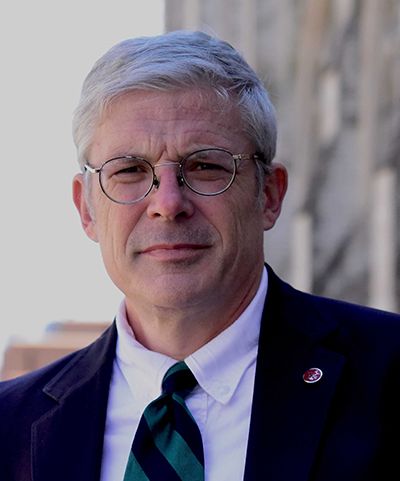Associate Professor and Chair, Department of History,
St. Louis University
Tom’s research interests focus upon the history and archaeology of later medieval Ireland. For more than twenty years he has directed a surveying and excavation project focused upon Kilteasheen, a high status Gaelic ecclesiastial site. His publications include A Nation in Medieval Ireland? Perspectives on Galiec National Identity, 1200-1400 (Oxford: Archaeopress, 2004) and The King’s Cantreds: Politics, Ethnicity, and Identity on the Thirteenth Century Irish Frontier (Turnhout: Brepols, 2017). His current research is on the Gaelic lordship of Moylurg in 13th and 14th centuries, focusing on the castle known as MacDermot’s Rock on Lough Key, County Roscommon.
Tom’s reflections upon his time in our doctoral program center upon both the faculty and specific coursework. He observes: “As a faculty member at a university with a graduate program in medieval history, I have come to appreciate the amount of time that my mentors devoted to my training and preparation. That personal interaction gave me a firm foundation of the expectations of scholarship and what it means to be a mentor in turn.
“There is no doubt in my mind that the two foundational courses that were then part of the graduate program (the historiography course and the quantitative methods course, the latter since discontinued) have stayed with me. In particular, I have benefited from the quantitative history course through my career as I have moved into more in depth research in Geographical Information Systems, spatial analysis, and remote sensing.”
How does Tom’s own conviction of the importance of history – in particular, medieval history – as part of liberal arts education inspire him, and influence the way he teaches or advises students? He says: “Medieval history is one of those fields that require an extensive array of side disciplines in order to be successful, including linguistic training, theology and church history, art history, etc. At the same time, medievalists, because they typically research larger time spans than historians deailing with other periods and areas of history, are more prepared to speak in terms of more extensive periods, meaning that they see trends and currents very differently. At the same time, the inherent interdisciplinary nature of medieval history opens the door to interaction with other fields of research, which in the academy is often missing.”

